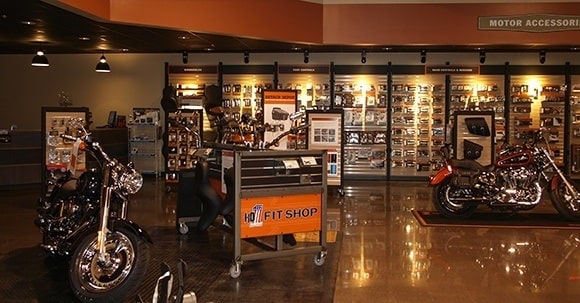Explore the Latest Motocross Gear NZ for Every Level of Rider
Explore the Latest Motocross Gear NZ for Every Level of Rider
Blog Article
Comprehending the Crucial Parts of a Motorcycle: A Comprehensive Guide for Fanatics
For bike enthusiasts looking to elevate their riding experience and guarantee their bikes run smoothly, comprehending the essential parts of a bike is vital. Each aspect, from the engine's complex functions to the essential duty of the braking systems, not only impacts efficiency yet also safety and security and convenience.
Engine Parts

The camshaft plays an important role in managing the timing of the engine's shutoffs, making certain the specific opening and closing necessary for reliable gas and air intake, as well as exhaust expulsion. This timing is essential to preserving ideal engine efficiency and performance. Additionally, the carburetor or fuel injection system, depending on the motorbike version, is accountable for blending air with gas in the appropriate ratio for combustion.
The air conditioning system, either air or liquid-based, works to keep the engine's temperature within functional restrictions, avoiding getting too hot and making certain longevity - motorbike shop. Each part, thoroughly developed and integrated, adds to the smooth operation of the engine, specifying the motorcycle's power result and total performance
Transmission System
Integral to the bike's functionality, the transmission system makes sure reliable power transfer from the engine to the wheels. This system consists of numerous essential elements, consisting of the clutch, transmission, and last drive, each playing a crucial role in translating the engine's power right into movement. The clutch, usually operated by a hand bar, serves to engage and disengage the engine from the transmission, enabling for smooth equipment modifications and controlled velocity.
The gearbox, often described as the transmission correct, consists of a collection of gears that cyclists can manually change via to adjust the bike's speed and torque output. These gears are set up in a sequence that enables the motorcycle to speed up smoothly and maintain optimum engine performance across various rates. The majority of bikes make use of a sequential gearbox, needing the motorcyclist to shift equipments in a predetermined order.
Braking Devices
While understanding the transmission system is key to harnessing a motorbike's power, similarly crucial is the capacity to regulate and quit that power effectively, which is where braking systems come right into play. Brakes are important for safety and efficiency, supplying the biker with the necessary control to browse numerous surfaces and conditions. Commonly, motorcycles feature two kinds of braking systems: disc brakes and drum brakes.
Disc brakes are much more prevalent in modern-day motorcycles because of their superior efficiency. They contain a brake disc, caliper, and pads. When activated, the caliper presses the brake pads against the spinning disc, transforming kinetic energy right into warmth, consequently reducing the wheel. This system supplies better heat dissipation, regular efficiency, and improved stopping power, particularly in damp problems.
Conversely, drum brakes, though less common, are still discovered in some motorbikes. They work by pushing brake footwear against the inner surface of a drum affixed to the wheel. While usually much less reliable in heat dissipation and stopping power, drum brakes are less complex and a lot more cost-effective.
Understanding these braking systems' nuances enables riders to preserve their bikes effectively and appreciate the design that makes certain efficient and risk-free quiting.
Suspension and Guiding
Suspension and guiding systems are essential parts that significantly affect a bike's handling and ride comfort. The shock absorber, containing forks at the front and shock absorbers at the rear, soaks up roadway irregularities, improving stability and control. Front forks, inverted More Bonuses or typically telescopic, compress and rebound to minimize effects, while rear shock absorbers maintain tire contact with the roadway, crucial for grip and safety.
Guiding, centered around the handlebars, links the biker to the motorcycle's directional control. The steering head bearings ensure smooth procedure, allowing exact ability to move. Appropriate placement and upkeep of these bearings are essential for predictable steering response and reducing cyclist fatigue.
The suspension's adjustability is another important aspect; preload, damping, and rebound setups permit personalization to fit different riding problems and designs. This flexibility is important for optimizing efficiency, whether navigating metropolitan streets or taking on rugged trails. Innovations like electronic shock absorber use real-time adjustments, enhancing trip top quality throughout varied terrains.

Electrical Systems
After making certain a smooth and regulated experience with efficient suspension and guiding systems, focus turns to the electrical systems, a critical element of modern bikes. These systems play a vital click over here now duty not just in starting the engine but likewise in powering different elements that boost the performance and safety of the bike.
At the heart of a bike's electric system is the battery, which shops electric power needed for beginning the engine and powering complementary systems - mx parts nz. The alternator or generator, combined with the rectifier-regulator, ensures the battery stays charged while the motorbike functions, transforming power right into electric energy and preserving voltage levels
The ignition system, one more vital element, is accountable for igniting the air-fuel combination in the engine's cylinders. Modern motorcycles commonly utilize a digital ignition system, providing better performance and integrity compared to standard systems.
Lights systems, including fronts lights, tail lights, and indications, are likewise crucial, making certain presence and safety and security for the biker. Added electronic elements such as sensors, control devices, and presents add to advanced features like gas injection monitoring, anti-lock stopping systems (ABS), and electronic dashboards, further boosting the riding experience.
Verdict
A thorough comprehension of a motorbike's important elements, consisting of the engine, transmission system, stopping systems, suspension, guiding, and electrical systems, is important for enthusiasts aiming to enhance comfort, performance, and safety. Mastery of these components allows for informed choices relating to upkeep and upgrades, eventually boosting the riding experience. By incorporating this expertise, bikers can ensure their motorcycles run at peak performance and reliability, thereby taking full advantage of both pleasure and long life of their cars.
For bike lovers looking to raise their riding experience and guarantee their bikes run smoothly, understanding the important elements of a motorbike is critical.Indispensable to the motorcycle's capability, the transmission system makes sure effective power transfer from the engine to the wheels.While comprehending the transmission system is essential to utilizing a bike's power, similarly essential is the ability to manage and stop that power effectively, which is where stopping devices come right into play. Usually, motorcycles feature two types of stopping systems: disc brakes and drum brakes.
A comprehensive reference understanding of a motorcycle's crucial parts, consisting of the engine, transmission system, stopping mechanisms, suspension, steering, and electric systems, is important for lovers intending to maximize safety and security, performance, and convenience.
Report this page